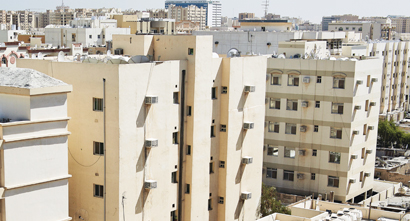Qatar grapples with shortage of affordable housing
Amid soaring housing rental in Qatar, the country’s growing migrant worker and low-income groups continue to face challenges in finding affordable accommodation as the supply remains disproportionately low against demand, writes Syed Ameen Kader.
 Qatar has historically seen limited supply of housing for lower- to middle-income households. (Image Corbis)
Qatar has historically seen limited supply of housing for lower- to middle-income households. (Image Corbis)According to some market estimates, Qatar currently has over a million labourers, and an annual increase of between seven and 10 percent is anticipated over the next five years. The 2010 census indicated that there were approximately 920,000 workers accommodated in more than 36,000 compounds of varying sizes located throughout the country. Findings of the most recent census have not been released yet. Nick Witty, director, real estate, Deloitte, Qatar, said, “The current forecasts suggest that there could be additional demand for between 500,000 and 1 million beds in the run-up to the 2022 World Cup.”
Historically, the availability of housing for lower- to middle-income households has been relatively limited in Qatar. However, industry observers suggest that in recent years there have been some initiatives by both private and quasi-government entities such as Ezdan Real Estate and Barwa Real Estate who have each built extensive residential facilities such as the Ezdan Village compounds and Barwa City and Barwa Village. “While this has undoubtedly increased supply there is still a steady demand for affordable housing especially as the country continues to witness rental growth across all residential asset classes,” said Witty.
But why does the market have such a limited supply of affordable housing despite a growing demand? “This has been due to a lack of enforcing labourers’ housing regulations,” said Edd Brookes, general manager for DTZ Qatar. However, he added, the government has expanded the number of inspectors to 300 (up from 150), with plans to expand this to over 400 inspectors in the near future.
Another major factor for developers’ low interest towards building affordable housing is the high cost of land. Land in Qatar, like many Gulf countries, is traded as a commodity without the ultimate owners necessarily having any intention of developing it. “As a result, land is often too expensive to develop into low-cost accommodation as the developer will not be able to secure the returns he requires and as such the focus is on higher end, higher quality products which command higher rents and in turn higher investment returns,” explained Witty.
In order to mitigate this problem, he suggested the government could look at releasing further tranches of land in certain areas solely for the development of workers’ accommodation and either entering into public private partnership (PPP) style arrangements with private sector developers/investors or promoting further development through the quasi-government developers such as Barwa Real Estate.
However, the Qatar property market has already started seeing that trend. “In the past there was a focus of private developers going for higher- and middle-income residential schemes. However, there is now an increasing contribution by the private sector to provide labour accommodation which meets government standards. This includes a maximum of four labourers to a room, a minimum or four square metre per labourer and on-site health facilities for all accommodation featuring over 100 labourers, added Brookes.
Qatar is certainly leading the way for improving labour standards within the Middle East. “But these changes take time to implement. Perhaps increased powers to fine and shutdown labour accommodation that does not meet the minimum standards would help in the long run,” Brookes concluded.
Like this story? Share it.





